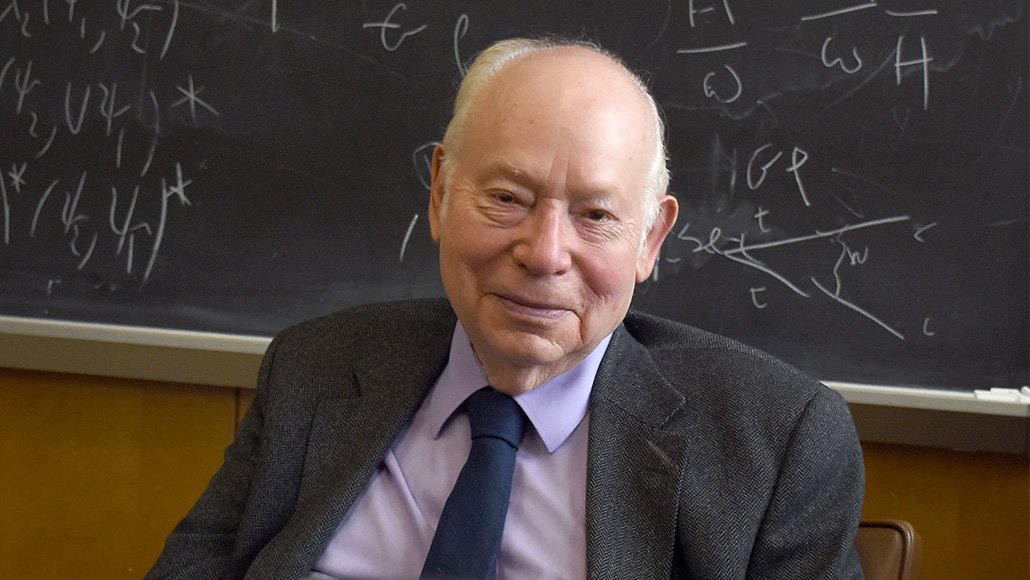Mythology has its titans. So do the flicks. And so does physics. Only one fewer now.
Steven Weinberg died July 23, on the age of 88. He was one of many key mental leaders in physics through the second half of the twentieth century, and he remained a number one voice and energetic contributor and trainer by the primary 20 years of the twenty first.
On lists of the greats of his period he was at all times talked about together with Richard Feynman, Murray Gell-Mann and … nicely, simply Feynman and Gell-Mann.
Amongst his friends, Weinberg was some of the revered figures in all of physics or maybe all of science. He exuded intelligence and dignity. As information of his loss of life unfold by Twitter, different physicists expressed their regret on the loss: “One of the completed scientists of our age,” one commented, “a very eloquent spokesman for the scientific worldview.” And one other: “Among the finest physicists we had, among the finest thinkers of any selection.”
Signal Up For the Newest from Science Information
Headlines and summaries of the most recent Science Information articles, delivered to your inbox
Weinberg’s Nobel Prize, awarded in 1979, was for his position in creating a concept unifying electromagnetism and the weak nuclear power. That was an important contribution to what turned referred to as the usual mannequin of physics, a masterpiece of clarification for phenomena rooted within the math describing subatomic particles and forces. It’s so profitable at explaining experimental outcomes that physicists have lengthy pursued each alternative to seek out the slightest deviation, in hopes of figuring out “new” physics that additional deepens human understanding of nature.
Weinberg did essential technical work in different realms of physics as nicely, and wrote a number of authoritative textbooks on such subjects as basic relativity and cosmology and quantum subject concept. He was an early advocate of superstring concept as a promising path within the persevering with quest to finish the usual mannequin by unifying it with basic relativity, Einstein’s concept of gravity.
Early on Weinberg additionally realized a want to speak extra broadly. His well-liked e book The First Three Minutes, printed in 1977, launched a technology of physicists and physics followers to the Huge Bang–beginning of the universe and the basic science underlying that metaphor. Later he wrote deeply insightful examinations of the character of science and its intersection with society. And he was a longtime contributor of considerate essays in such venues because the New York Evaluate of Books.
In his 1992 e book Goals of a Remaining Idea, Weinberg expressed his perception that physics was on the verge of discovering the true elementary clarification of actuality, the “closing concept” that will unify all of physics. Progress towards that objective appeared to be impeded by the obvious incompatibility of basic relativity with quantum mechanics, the maths underlying the usual mannequin. However in a 1997 interview, Weinberg averred that the issue of mixing relativity and quantum physics in a mathematically constant manner was an essential clue. “While you put the 2 collectively, you discover that there actually isn’t that a lot free play within the legal guidelines of nature,” he stated. “That’s been an infinite assist to us as a result of it’s a information to what sort of theories may probably work.”
Trying to bridge the relativity-quantum hole, he believed, “pushed us an amazing step ahead towards having the ability to develop lifelike theories of nature on the idea of simply mathematical calculations and pure thought.”
Experiment needed to come into play, in fact, to confirm the validity of the mathematical insights. However the usual mannequin labored so nicely that discovering deviations implied by new physics required extra highly effective experimental expertise than physicists possessed. “Now we have to get to a complete new degree of experimental competence earlier than we are able to do experiments that reveal the reality beneath the usual mannequin, and that is taking an extended, very long time,” he stated. “I actually suppose that physics within the type by which it’s being finished … goes to finally attain a closing concept, however most likely not whereas I’m round and really probably not when you’re round.”
He was proper that he wouldn’t be round to see the ultimate concept. And maybe, as he typically acknowledged, no person ever will. Maybe it’s not experimental energy that’s missing, however quite mental energy. “People will not be good sufficient to know the actually elementary legal guidelines of physics,” he wrote in his 2015 e book To Clarify the World, a historical past of science as much as the time of Newton.
Weinberg studied the historical past of science totally, wrote books and taught programs on it. To Clarify the World was explicitly geared toward assessing historical and medieval science in mild of contemporary information. For that he incurred the criticism of historians and others who claimed he didn’t perceive the aim of historical past, which is to know the human endeavors of an period by itself phrases, not with anachronistic hindsight.
However Weinberg understood the point of view of the historians completely nicely. He simply didn’t prefer it. For Weinberg, the story of science that was significant to individuals immediately was how the early stumblings towards understanding nature advanced right into a surefire system for locating right explanations. And that took many centuries. With out the angle of the place we at the moment are, he believed, and an appreciation of the teachings we’ve got realized, the story of how we bought right here “has no level.”
Future science historians will maybe insist on assessing Weinberg’s personal work in mild of the requirements of his instances. However even when seen in mild of future information, there’s little doubt that Weinberg’s achievements will stay within the realm of the Herculean. Or the titanic.



